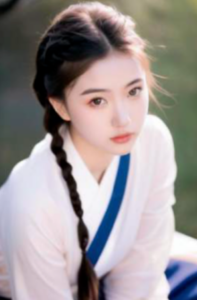
On November 27, 2023, the Beijing Internet Court (BIC) ruled in an infringement lawsuit (Li v. Liu) that an AI-generated image is copyrightable and that a person who prompted the AI-generated image is entitled to the right of authorship under Chinese Copyright Law (see our bilingual version, and the later-released official translation). Plaintiff generated an image of a woman by using Stable Diffusion, an open-source generative AI model that creates images from textual prompts. After publishing the disputed image on a Chinese social media platform (Xiaohongshu), Plaintiff discovered that Defendant had used the same image to illustrate an article on a different website without permission. Plaintiff then sued Defendant in the BIC.
Specifically, BIC made the following rulings:
1. The disputed AI-created image constitutes a “work” pursuant to the Copyright Law of the People’s Republic of China.
The court applied a four-element test to determine whether the disputed image constitutes a work under Chinese Copyright Law: (1) belonging to the fields of literature, art, or science; (2) possessing originality; (3) having a form of expression; and (4) being a result of “intellectual achievement”. The court paid special attention to the “intellectual achievement” and “originality” elements.
“Intellectual achievement” refers to the result of a human being’s intellectual activities. Plaintiff’s intellectual activities are evinced from the conception to the final creation of the disputed image. Through Stable Diffusion, Plaintiff selected over 150 prompts, arranged their order and set specific parameters. He continued to adjust and modify those prompts and parameters until the final image aligned with his conception. These steps sufficiently demonstrate that the disputed image was created as a result of Plaintiff’s intellectual inputs.
Furthermore, “originality” is manifested in Plaintiff’s personalized choices and aesthetic judgement throughout the generation process. This involved not only the selection and arrangement of the prompts and parameters, but also the refinement of the final output. Therefore, such “intellectual achievements” transcended the mere “mechanical” ones that are devoid of originality.
2. Plaintiff has a right of authorship in the disputed image.
The court first ruled out the possibility that the AI model could be an author because Article 11 of Chinese Copyright Law explicitly restricts the definition of “author” to natural persons or legal entities. Additionally, the AI model’s designers are not authors, as their intellectual contribution lies in creating the AI tool rather than the generated image itself.
By contrast, Plaintiff deliberately chose and arranged multiple prompts that led to the creation of the disputed image. Recognizing his direct intellectual contribution, the court attributed authorship to Plaintiff. However, the court emphasized the need to disclose AI usage, as a matter of good faith and public notice.
3. Defendant infringed upon Plaintiff’s rights in the prompted AI image.
The court found that Defendant had removed the image’s original watermark, which indicated Plaintiff’s identity as the image’s creator, and Defendant could not provide the specific source where she had acquired the image. The court therefore ruled that Defendant infringed upon Plaintiff’s copyright.
The principal policy goal underlying the BIC’s decision was to promote innovation through the latest generative AI technologies. The court opined that copyright law should be applied to incentivize creativity and innovation using the latest tools, which necessitates adapting traditional copyright frameworks to evolving AI technologies. In a recent interview, the presiding judge of Li v. Liu reiterated this policy consideration, stressing the importance of this decision in setting clear guidance for future innovators in the AI industry.
US vs China: Two Approaches to Copyrighting AI-Generated Content (AIGC)
While the BIC ruling held that prompting a text-to-image AI tool could be sufficient creative involvement to be deemed the author of the resulting image, recent US Copyright Office (USCO) rulings reach the opposite result. The USCO issued a registration guidance, specifically rejecting material produced through prompted technology where the AI usage is more than de minimis. It first refused to register a claim of copyright in a work that was allegedly created independently by an AI without human prompting, see A Recent Entrance to Paradise, a ruling that was affirmed by a U.S. District Court in the case of Thaler v. Perlmutter. While that ruling is likely consistent with the BIC’s interpretation of Chinese law, the USCO then refused to register claims of copyright in works created through substantial iterative prompting of a generative AI tool, see Théâtre D’opéra Spatial; Zarya of the Dawn. Those rulings take a narrower view of authorship, under which a human prompter of an AI tool will not be considered an author of the output if the details of the output cannot be predicted in advance. The USCO recently reaffirmed that narrower view in a letter that denies registration of an AIGC for the fourth time (See Suryast).
Implications
Chinese courts have ruled on the eligibility of AIGC for copyright protection before Li v. Liu but have yet to reach consensus. In Feilin v. Baidu, BIC rejected the copyrightability of an AI-generated report due to lack of originality. However, the Shenzhen District Court granted copyright protection to an AI-generated article in Tencent v. Yingxun. The Li v. Liu decision tips the balance again toward recognizing the right of authorship in AIGC in the Chinese copyright scheme.
It should be noted that the judgment of Li v. Liu was rendered by the Court of First Instance, and Chinese jurisprudence does not apply the common law doctrine of stare decisis. Therefore, whether the BIC ruling will be affirmed on the appellate level and its effects on international IP law are undetermined. Nevertheless, the dynamic interpretation of Chinese Copyright Law in the Li v. Liu decision has brought a new perspective to the AI copyright debate.
________________________
To make sure you do not miss out on regular updates from the Kluwer Copyright Blog, please subscribe here.


